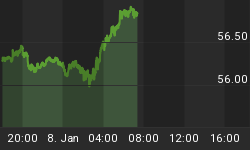Gold and silver forge on to new highs and all is looking well for the next up leg in this multi-year bull market. Yet all was not looking so sure some months back when the crash of the credit crunch was still echoing in people's ears, talk of a double dip recession was rife and the tower of bail-out debt threatened to tumble down on many a government.
Yet, amidst all this fear, one technical indicator issued a long term buy signal for precious metals back in February 2010. It is an indicator based on the unemployment figures provided by the US Bureau of Labor Statistics and it has 80% accuracy over 40 years when precious metals prices were freed from state control.
The underlying thesis of the indicator is simple - precious metals become a buy near an unemployment peak. The fundamentals behind this metals-unemployment link are clear. Using silver as the bellwether metal here, we know that silver is a more GDP-sensitive metal than gold due to the fact that industry is the main user. This was shown in the 2009 figures which place industrial usage at 40% of total demand (down from 54% in 2008).
Continuing to use silver as the precious metals representative, we show the unemployment rate versus silver below. The average monthly silver price is in red. So we see that when unemployment peaks and the economy begins its recovery, silver puts in a price bottom and also embarks on a rise. Note also that the US unemployment figures are a good proxy for the global economy as a whole since the USA accounts for about 25% of world GDP and we can be confident that what happens in the USA will also reflect worldwide.

So note the peaks in unemployment in 1971, 1975, 1992 and 2003. Note also how silver put in significant price bottoms near these times as indicated by the vertical buy signal lines.
The only time this proved to be wrong was in 1982-1983 when silver continued to go down despite the world economy finally coming out of a severe recession. I put this down to the fact that gold and silver had completed their own particular investment cycle which is discussed in another article. Since the current cycle is only 11 years old, we discount this for our new buy signal.
But the question you may ask is how do we know that unemployment has actually peaked? How do we know it is not a brief drop and a prelude to further higher levels of unemployment? Well, there is another indicator that fine tunes the timing of this indicator and it is the good old RSI indicator. The Relative Strength Indicator is more commonly used by technical analysts in the realm of stock and index prices but it can also be applied to economic values and the result is gratifying as the graph below shows.

Note in the bottom section of the graph we use the moving average of the RSI (or MARSI in green) superimposed upon the RSI itself (red). The key fact is that when the RSI drops below the MARSI in the traditional overbought zone, the peak of unemployment is confirmed and the precious metals buy indicator is triggered.
It is as simple as that. The indicator triggers and a long term buy and hold is issued. As you may suspect, this indicator suits investors with the longer term view rather than traders and other who hold speculative positions for much shorter periods.
As an aside, can the indicator tell us when to sell precious metals? The answer is not reliably enough and we must look to other metrics for that answer.
But remember, in this game of predicting the future, it is all about probabilities. It couldn't be anything else. Read the opinions, weigh them in the balance and come to your own conclusions. I was going to keep this information proprietary but since the buy signal comes but once every seven years or so, I reckon most would have forgotten about it come the next bull market!
Now before I leave you with those thoughts, there is one more unemployment indicator we do well to archive and then revive in the years ahead and that is the recession prediction power of the year-on-year (YoY) change in the rate of US unemployment. The graph is shown below.

The YoY change in unemployment is simply the difference in the unemployment rate from that of a year previously. If we graph it and put the grey recession bars in we see something interesting. If a line is drawn at the 0.5 level, any time the YoY unemployment change rises and crosses it, we get a recession. Now this may or may not be relevant to you as a precious metals investor, but it is possibly more important to you as someone with a job and a family to feed and clothe.
Simply put, when this indicator rings, consider taking out insurance against possible loss of employment. Also consider staying in your present job if you have been in it a number of years as you will be more valuable to your employer than someone who just walked into the post. This is not a guarantee of things to come, but a pause to reflect on things that may come.
That is for another time years away. But now it is about precious metals and the long term indicator says "Buy".
Further analysis of precious metals can be had by going to our blog at http://goldandsilveranalyst.blogspot.com where readers can learn about more about our analysis. Comments and questions are also invited via email to silveranalysis@yahoo.co.uk.
















